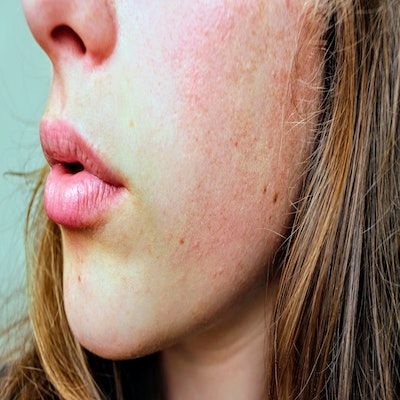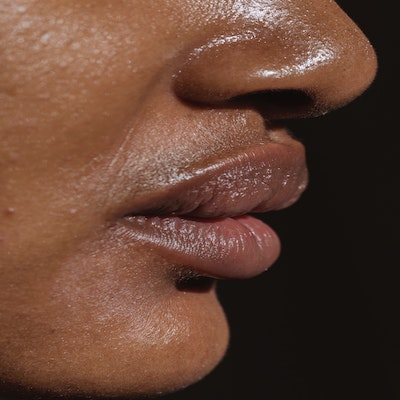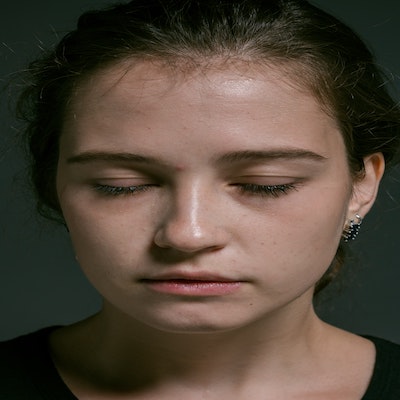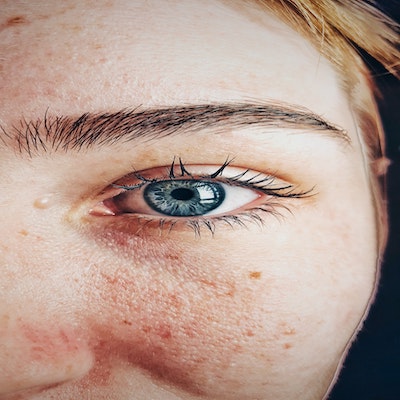Did you know skin type can play an essential role in taking care of your skin? Find out about yours here!
You need to know different things when you are taking care of your skin, and this is where skin types come into play. Skin type is one of the things you need to know, and it can play an essential role in many diverse situations. Some situations include choosing what kind of skincare products to use, how your skin can be affected by particular weather, and generally, how you should take care of your skin.
By knowing your skin type, you might find taking care of your skin easier because you can be more selective in your skincare approach. Some ingredients and skincare products could positively impact your skin or even negatively depending on how your skin reacts. Although sometimes, the effects could be from your skin condition, it could also be due to skincare type and its reaction to certain conditions, such as when using skincare products.
Therefore, finding out your skincare type could narrow some of the skincare products you should use, which would greatly help as there are so many products out in the market. Many people may think there are only 3 skin types, but there are actually 5 skin types. You can find your skin type in multiple ways. There are dry, normal, oily, combination skin types. Also, some people consider sensitive skin more of a skin condition, but in this discussion, we will say sensitive skin is a skin type.
Dry Skin

Dry skin can be distinguished by how the skin feels tight and looks rough or a bit dull. You would be able to see fine lines but less visibility for pores. The feeling of tight skin can feel tighter, especially after you use a cleanser, and your skincare products such as cream might feel like it only keeps your skin moisturised for a certain period, like 1 hour to 2 hours.
There are various causes for dry skin. Essentially, your skin being dry means that it could be losing necessary moistures, or your skin is not producing enough natural oil and getting the nutrients it requires.
Ageing is one cause because you start to produce fewer nutrients such as collagen and oil when you age. Some other causes include environmental factors such as impurities around us, windy, hot and cold environments that can dry our skin and deprive the skin of nutrients and moisture. Another cause includes stripping your skin from the skincare products you use like harsh cleansers, soap not made for the face, shower gel and even artificial perfumes or colognes, which can irritate your skin.
For dry skin, you should be using skin-friendly cleansers that do not strip your skin of moistures and oil but gently cleanse pollutants while keeping your skin hydrated. Additionally, skin care products used to retain moisture and hydrate the skin. It would be good to use toners to help moisturisers get absorbed easier, richer moisturisers to provide sufficient nutrients for your skin, and even frequently using mists to keep your skin stay hydrated.
Related Post: 12 Surprising Ingredients Used In Skincare Products
Normal Skin

Normal skin is a term usually used to describe well-balanced skin. Some argue normal skin type is almost perfect. However, only almost perfect in that, unfortunately, there might be no such thing as flawless skin. To put it out, it doesn’t mean that if you have other skin types, your skin can’t be improved or healthy. Each skin type just has different factors that you should consider when taking care of your skin.
Generally, seeing well-balanced moisture and good overall sebum can determine normal skin. Also, there could be a bit of oil on the T-zone (forehead, nose and chin) area of your face, and your skin would be well balanced that is not too oily and too dry. Normal skin type would have fine pores, smooth texture and radiant skin that looks healthy with no blemishes. Additionally, normal skin types should have resistance to sensitivities.
Determining the cause of normal skin can be pretty complex. The quickest and most straightforward explanation could be that skin type is determined by genetic. However, the complicated part can be that there are quite a lot of factors that could change your skin type. For instance, one factor might be ageing. When you start ageing, some people who have normal skin can get more dry skin by reducing nutrients such as oil and collagen.
Environmental and more biological factors such as hormone changes can affect your skin type even if you have a normal skin type. One way to try getting normal skin can be pretty tricky, by constantly checking your skin type, adjusting your skincare routines according to your skin type, and accounting for the factors around you. As you consistently take care of your skin and improve, your skin may look well balanced close to normal skin. This method can be challenging, but it can also be costly, and you would need to be persistent as it takes time for your skin type to change.
However, if you have normal skin, you should maintain your skin. Protect your skin during the day by using sunscreen. UV light is one of the factors that can damage your skin quite easily. Also, you can use antioxidant skincare products to protect your skin from pollutants that can harm your skin, keeping your skin clean by using a gentle cleanser and moisturised with a face cream. You can focus on creating a skincare routine that suits your needs incorporating sunscreen during the day and rich antioxidant skincare products. If you are don’t have a skincare routine yet and interested in making one, I made a guide on making a simple 3-step skincare routine.
Oily Skin

Oily skin is almost entirely the opposite of dry skin that you would feel that your skin is slippery and looks shiny. Your skin would be less prone to fine lines with the oil, but your pores can be more visible and dark spots may be produced due to excessive oil. Excessive oil can also cause breakouts due to the clogging and congestion of pores. If you use makeup, you will find that it can be challenging to keep your makeup stable as excessive oil can unbalance and separate your makeup.
Similarly, with dry skin, there are different causes for oily skin. There is a biological reason, such as stress can increase oil production from the level of hormone, like the cortisol increasing. Additionally, oily skin can be caused by environmental factors such as humidity and hot weather.
During hot and humid weather, sweating can clog your pores more frequently, and when perspiration happens, your skin can be irritated. Furthermore, when during humid weather, when there are reoccurring environmental changes, your sebaceous glands can become overactive to produce more sebum, in other words leading to excessive oil.
If you have oily skin, you should use a cleanser that removes oil, such as daily and oil cleansers. If it doesn’t cause excessive stripping, consider double cleansing by using an oil cleanser to break down grease and cleanse again with your daily cleanser. Additionally, you should use lighter skincare products such as toner to remove excessive oil further, more lightweight lotion to nourish nutrients but don’t add to your oil and clog your skin for breakouts or spots. Also, it would be best to refrain from using highly oily makeup products as it can even contribute to clogging and congestion of pores.
Combination Skin

Combination skin is thought to be the most common skin type. As the name suggests, combination skin type would have both dry and oily skin type aspects on your face. This skin type can be distinguished most from the different skin textures between the T-zone and cheek areas. You might have excessive oil on your T-zone and normal to dry skin on your cheek areas.
Commonly, the feelings of your skin would be similar to the oily and normal to dry skin on the different areas of your skin when you have combination skin. The skin area that is more oily skin would have greasy and shiny skin that you could feel the excessive oil. Dry skin area would feel rough and tight, especially post-cleansing if you are using a harsh cleanser. You would see that your pores are more visible in the oily than your dry skin area. Normal skin areas would look well balanced with more fine pores and radiant skin.
The cause of getting combination skin is due to the mixed factors of the other skin types. The oily skin area would be due to sebum overdrive, leading to excessive oil and dry skin from the lack of natural oil and nutrients. Each skin type has factors that can cause those skin types, such as dry skin from ageing, normal skin from possibly genetics, and oily skin from hot weather, increasing perspiration activity.
If you have combination skin, you would need to determine each area with a different skin type. After, if you want to be really accurate for each skin area, you would selectively target the different skin needs when you use your skincare products. Generally speaking, you would use rich cream for dry skin, antioxidants products for normal skin and lighter cream for oily skin areas. However, there are options to use some skincare products with multi-functions for people with multiple concerns.
Related Post: The 10 Best Face Cleansers For Combination Skin
Sensitive Skin

Sensitive skin can be pretty challenging to manage because you would need to be persistent and experiment with various skincare products, accounting for the possibility of getting irritated and inflamed skin reactions. Other reactions may include itching, redness, stinging, getting a rash and feeling burning sensations. Generally speaking, sensitive skin type different from normal skin where the skin tends to be less prone to reactions is emanated by reactions caused by various factors.
The causes of sensitive skin can be genetic, environmental and biological. Some people may have sensitive skin permanently, and others react to other factors. Similar to some of the other skin types, environmental factors can be from humidity, hot, cold, windy weather, and pollutants around you. Also, it could be from biological factors such as sensitivity towards certain ingredients, allergies in the atmosphere, and what you consume. It could be from both interior and exterior factors.
Suppose you have identified yourself as someone who has sensitive skin. In that case, you should try to avoid certain ingredients that may cause irritation or sensitisation, including skin care products such as fragrances, colours, parabens and sulphates.
Furthermore, when you choose your skincare products, you should try the products one by one, one at a time to see if there is any reaction and test them out before adding more skincare steps. It is also recommended that you choose products that are more gentle and calming on the skin. To be safer, you should also patch test, particularly for sensitive skin, although it is recommended for all skin types for the products you will use.
Read More: How To Read Skincare Product Ingredients Like A Pro
Patch Testing
Patch test comprises of trying your products first by applying to your inner forearm and if there was no reaction behind your ear to see if any reactions appear waiting for few hours, up to 24 hours before using it on your face. Patch testing can help you reduce the risk of getting a reaction on your face.
How To Find Your Skin Type
The bare skin test is one of the tests to find your skin type and could be one of the most convenient tests. It is quite a simple test where you cleanse your face with a gentle cleanser and wait for 30 minutes without applying anything on your face.
After 30 minutes, you would inspect your skin to check for the skin type characteristics and textures. You can check if your skin feels dehydrated and tight, which could mean you have a dry skin type. If you have excessive oil on your T-zone and cheek areas, that would mean you have an oily skin type. If you have both characteristics or only parts of your skin like oily T-zone, it would mean you have combination skin.
For normal skin, you may see a bit of oil on your T-zone but not excessive, and your cheek area would be well balanced. You should see healthy and radiant skin. For sensitive skin, you may feel itchy, burning sensation and redness.
It is excellent to understand the different skin types as your skin can change from many factors that we are exposed to every day. There were 5 skin types – dry, normal, oily, combination and sensitive skin which all have various reasons for their cause and different ways of managing the skin.
Each skin type also had diverse factors to consider, such as biological, environmental, and skincare products recommended for each one. There are so many skincare products right now that it would be pretty costly and time-consuming to test each of them, so finding out your skin type could be significant in narrowing and using a targeted approach.
You can patch test to reduce the risk of reaction and side-effects when you experiment with skincare products which are highly recommended. Also, with how your skin type can change from interior and exterior factors, the bare skin test was recommended to find your skin type, which is more convenient and less time-consuming.

